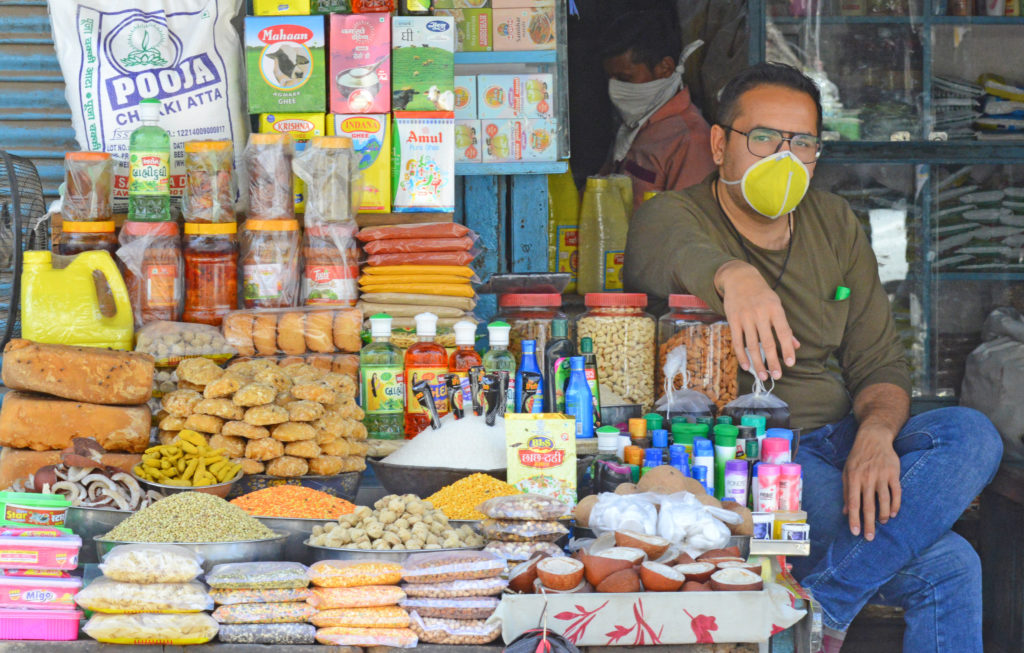Shefali’s travel notes, Investment Analyst in Singapore
When I arrived in India a couple weeks ago, after many months confined in Singapore, the most bizarre thing of all that struck me was how normal things appeared. At least superficially. The usual hustle and bustle on the streets has resumed as local shops and roadside vendors reopen. The famous sound of India – the honk of the taxi – is everywhere. Traffic is nearly back to its normal gridlock, with most public transport in operation; and road and metro construction has resumed in the cities. Shopping and eating venues, including restaurants, malls and markets, are open.
Despite this, many people continue to avoid such retail institutions, which are thus not yet operating at full capacity. Most people working in corporate jobs continue to do so from home when possible or part-time from the office. Informal workers do not have the same luxury. Children in higher grades returned to school in January 2021.
I have travelled to Mumbai, Bangalore and Chennai to meet with our investees and conduct due diligence. Domestic flights between major Indian cities are not as frequent as they used to be and, on average, operate at 70% capacity, with masks and shields mandated while on the plane.

At the eight institutions I met with, COVID-19 precautions vary. Each of them checked my temperature and meetings took place in a large conference room. Though all institutions strongly encourage employees to wear a mask, its adoption varies across offices. For most of our investees, all employees are back to working in the office full-time.
Signs of recovery
Discussions with our investees were insightful. Conversations with senior management reinforced the strong signs of recovery on the streets of the major Indian cities. All investees I met with reported rising repayment rates from clients. Field staff are now regularly meeting with clients and are up to date on the state of their businesses and employment. They have classified clients according to risk, finding that despite the enormous upheavals caused by the global pandemic, only a minority of clients (<5%) are at risk of shutting down their businesses completely.
End-clients in sectors such as restaurants, spas and tourism are still adjusting to the new normal, while those in essential services such as the corner grocery store and agriculture continue to have significant sales. Manufacturing businesses have picked up strongly. Government liquidity and guarantee schemes for micro, small and medium enterprises (MSMEs) and MSME-focused lending institutions have aided in their recovery. The uptick in GDP growth driven by a rise in consumption, with energy use at an all-time high in January 2021, provides further evidence.
While the return to normal in general business operations is encouraging, our partners are aware that end-clients sustained many months of suboptimal earnings during the lockdown. Most investees predict that clients will take some time to repay missed instalments and that it may take until March 2022 for portfolio quality to return to pre-COVID-19 levels.
With collections improving, our investees are confident enough to shift gears in the first quarter of 2021 from a focus on collections and maintaining high levels of liquidity, to supporting end-clients with additional loans and restructuring. However, partners will remain conservative in selecting new clients, avoiding highly impacted sectors. As of December 2020, most of our partners’ portfolios had contracted (average -5%). While partners expect disbursements to pick up in the first quarter of 2021, they project they will end the financial year (March 2021) with either stagnant or minimal portfolio growth and 25-40% portfolio growth in financial year 2021-22.
Support from institutional shareholders and lenders
An important factor in the recovery of our investees has been support from their institutional shareholders and lenders. Almost all have raised an internal round of equity during 2020 and thus are well- capitalized. Secondly, most of our partners have an investment-grade external rating. This has allowed them to benefit from government schemes and to continue raising debt from both local and foreign lenders.
Having access to both debt and equity funding throughout the pandemic has enabled our partners to provide the support their end-clients require during this crisis. The situation is different for smaller financial institutions that have struggled with fundraising and subsequently might strain to support their end-clients with additional funding.
While it is clear from what I saw in the streets and the conversations I had with financial institutions that India is well on the path to recovery, the harsh lockdown will have lasting impacts. To continue supporting their end-clients, our partners that have demonstrated resilience will require sustained, dedicated support and commitment from lenders.


